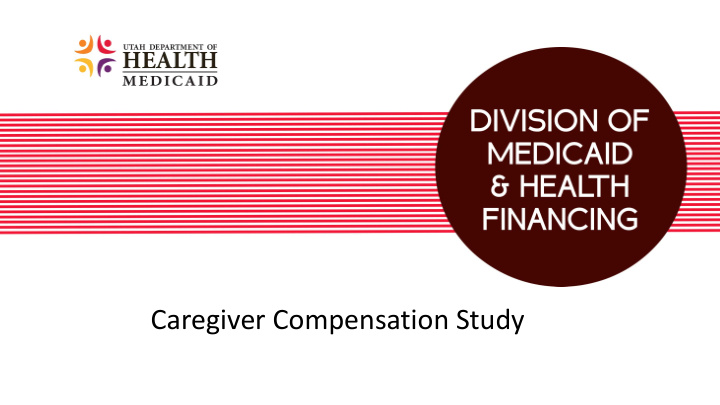



Caregiver Compensation Study
Purpose of f Study • “To develop a proposal to allow the state Medicaid program to reimburse an individual who provides personal care services that constitute extraordinary care to an individual’s family member who is enrolled in a existing waiver in the state.” • Explore options to relieve financial stress associated with uncompensated care
Services Im Impacted • Focus is on Activities of Daily Living (ADL’s) and Instrumental Activities of Daily Living (IADL’s) • Greatest impact will be on personal care services and supported living • Other services to consider will be attendant care services, homemaking, and activities of a similar nature
Ext xtraordinary ry Care • Federal Definition • “Care exceeding the range of activities that a legally responsible individual would ordinarily perform in a household on behalf of a person without a disability or a chronic illness of the same age, and which are necessary to assure the health and welfare of the participant and avoid institutionalization.” • Broad definition allows for states to decide how rigid/loose they want the definition to be • Many states have chosen to include further limitations
Additional State Guidance • Pennsylvania • Service that is beyond what a legally responsible adult is obligated to provide, otherwise, service must be conducted by a provider enrolled through traditional means • Minnesota • Use of developmental milestones charts • Kansas • No legally responsible adult will be paid unless one of four points are met
Reimbursement Caps • Vary across the nation • Some places limit wage (weekly/monthly) while others focus on the number of hours an individual can work (weekly/monthly) • Most common method to pay caregivers is using a simple hourly wage • Ranges anywhere from $10.75-$20.75 an hour
Stakeholder Feedback • Extensive stakeholder feedback has been included in the draft report • Points of focus include: access to services/providers, types of services an individual needs/utilizes, impact of caregiver compensation on the individual receiving services, risks to caregivers and individuals receiving services, definition of “extraordinary care”, and limitations that should be placed on a compensation program
Additional Considerations • “Welcome Mat” Effect • Strategies to minimize Abuse/Neglect/Exploitation and Fraud/Waste/Abuse • Documentation revisions • Caregiver burnout • Policy implementation has a cost
Conclusion Thank you for your time! Questions? Contact Josh Meyers jmeyers@utah.gov 801 538-6160
Recommend
More recommend